Welcoming a large dog into your home is an exciting prospect, but the thought of constant shedding might be a deterrent for some. If you’re dreaming of a big, cuddly companion but want to minimize the amount of hair around your house, you’re in luck. While it’s a common misconception that completely non-shedding dogs exist, there are many large breeds known for shedding significantly less than others. This makes them an excellent choice for allergy sufferers or anyone who simply prefers a tidier living space. At Dog Care Story, we’re dedicated to helping you find the perfect canine friend, and this guide focuses on large dogs that don’t shed much, offering valuable insights for prospective owners.
It’s important to understand that all dogs shed to some degree, releasing hair and dander. The key difference lies in the amount of shedding and the type of coat. Breeds with single-layered coats, curly or wiry textures, often shed less and can be better suited for those with allergies. These low-shedding qualities, combined with their impressive size and loving natures, make breeds like the Standard Poodle and Giant Schnauzer incredibly popular. If you’re looking for big dogs that don’t shed hair, this comprehensive guide will explore some of the best breeds available, along with essential grooming tips to keep their coats healthy and your home cleaner.
We’ll delve into the unique characteristics of these breeds, understand the science behind shedding and “hypoallergenic” labels, and provide practical advice to ensure you and your new large, low-shedding companion can enjoy a harmonious life together.
Understanding Dog Shedding and “Hypoallergenic” Dog Breeds
The term “hypoallergenic” often leads to confusion. In reality, no dog breed is completely allergen-free. Allergies are typically triggered by proteins found in a dog’s saliva, urine, and dander – tiny flakes of dead skin that attach to their fur and become airborne. While all dogs produce these allergens, breeds that shed less hair tend to spread less dander around the environment. Therefore, “hypoallergenic” dogs are those that shed minimally, making them a more manageable choice for individuals with sensitivities.
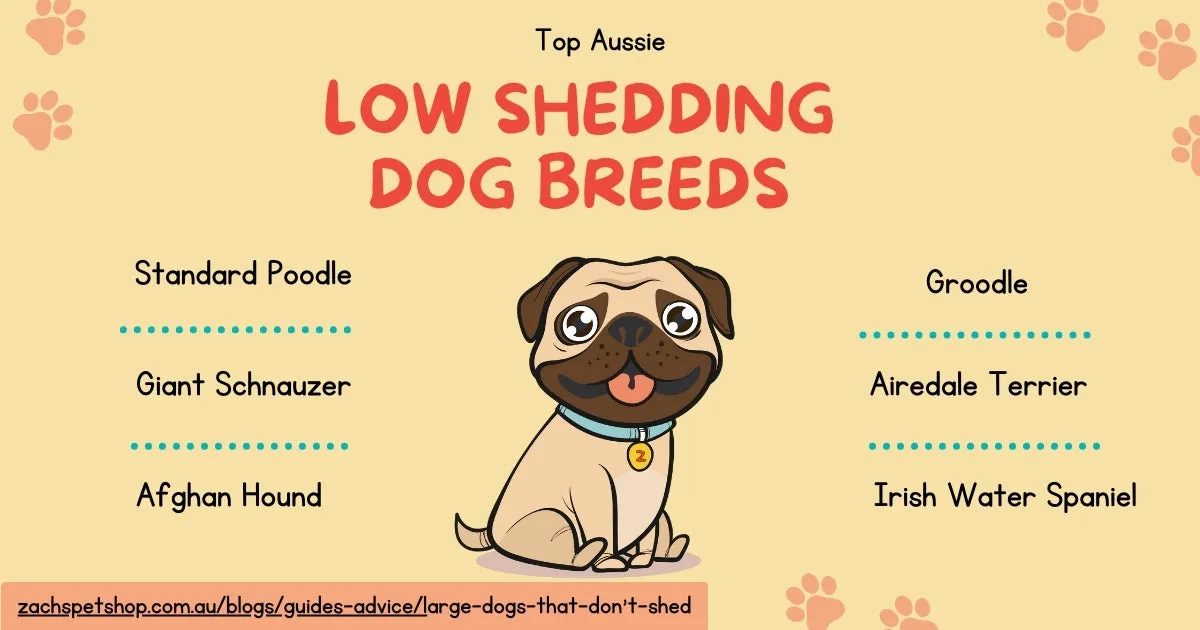 A cartoon pug surrounded by several suggestions of large dog breeds that don
A cartoon pug surrounded by several suggestions of large dog breeds that don
When considering large dogs that don’t shed much, it’s crucial to remember that their coat types often require specific care. Instead of shedding loose hair, these breeds might have continuously growing hair that can become matted if not properly maintained. This is where consistent grooming plays a vital role in managing their coat health and minimizing dander release.
Top Large Dog Breeds That Shed Very Little
Finding the perfect large dog that aligns with your desire for minimal shedding involves understanding the specific traits of different breeds. Here are some of the most sought-after large dogs that don’t shed hair significantly:
Standard Poodle
The Standard Poodle is a distinguished breed known for its exceptional intelligence and its highly desirable low-shedding coat. Unlike many other large breeds with double coats designed for insulation, Poodles have a single, dense, curly coat that traps loose hair rather than allowing it to fall freely. This makes them an excellent option for allergy sufferers and for those who want to maintain a clean home. However, this unique coat requires consistent grooming to prevent matting and tangles. Regular professional grooming or diligent at-home brushing is essential to keep their coat healthy and manageable. You can explore further options for dog breeds that don’t shed and stay small for other size considerations.
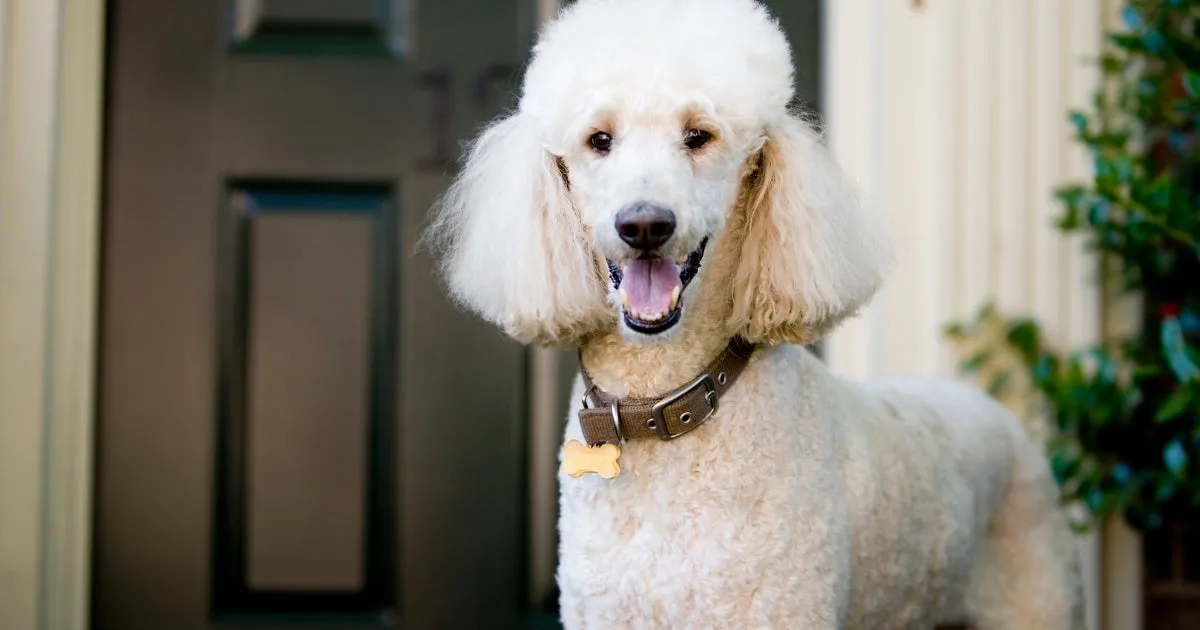 A white standard Poodle standing facing the camera looking happy.
A white standard Poodle standing facing the camera looking happy.
Giant Schnauzer
For those seeking a large, protective, and remarkably trainable companion, the Giant Schnauzer is an outstanding choice. These robust dogs boast a wiry, dense coat that sheds very little. Their minimal shedding makes them suitable for owners who are concerned about hair accumulation. To maintain the health and appearance of their distinctive coat and to minimize dander, regular professional grooming is recommended. This breed is known for its strong will and loyalty, making it a devoted family member with proper training and socialization.
 A large black Giant Schnauzer standing next to a lake.
A large black Giant Schnauzer standing next to a lake.
Airedale Terrier
Often referred to as the “King of Terriers,” the Airedale Terrier is the largest of all terrier breeds. They possess a short, wiry coat that contributes to their low-shedding nature. This makes them a fantastic choice for owners who desire a larger dog but are wary of excessive shedding. Their energetic and spirited personality, combined with their manageable coat, makes them an appealing breed for active households.
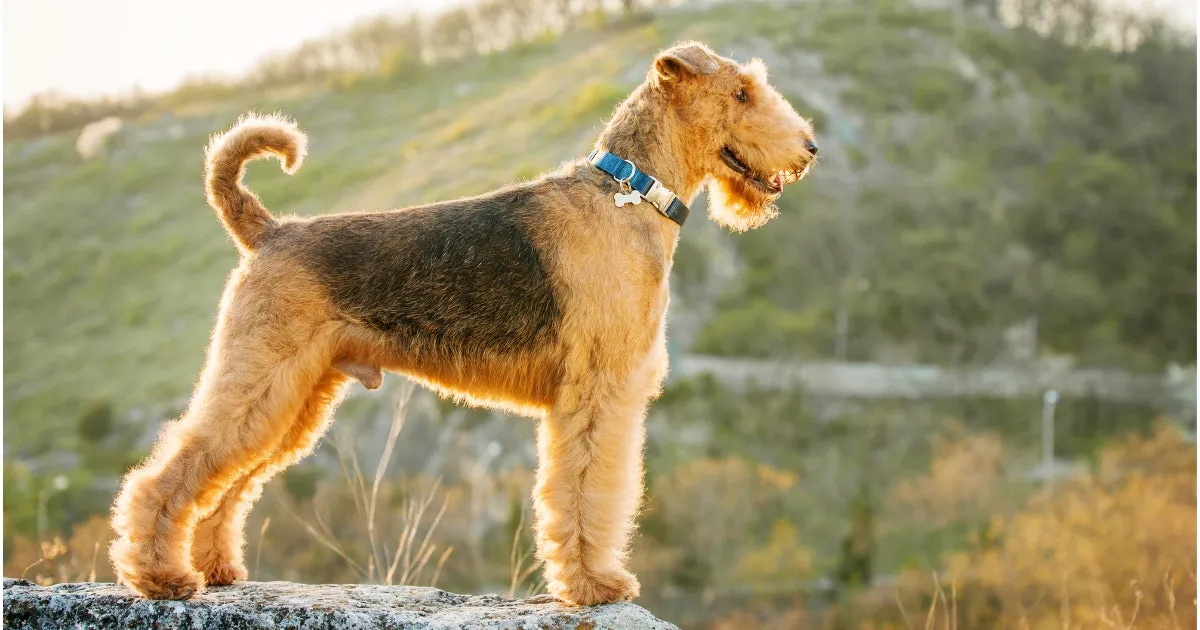 A brown and black Airedale Terrier with a square shaped head standings side on in front of a mountain.
A brown and black Airedale Terrier with a square shaped head standings side on in front of a mountain.
Groodle (Goldendoodle)
A delightful crossbreed between a Golden Retriever and a Poodle, the Groodle (also known as a Goldendoodle) is celebrated for its friendly disposition, intelligence, and adaptability. While their size can vary, many Groodles grow into large companions. They are highly sought after for their hypoallergenic, low-shedding coats, which can range from wavy to curly. Instead of shedding, their coat grows continuously, necessitating regular grooming to prevent tangles and maintain cleanliness. Their affectionate nature makes them wonderful family pets.
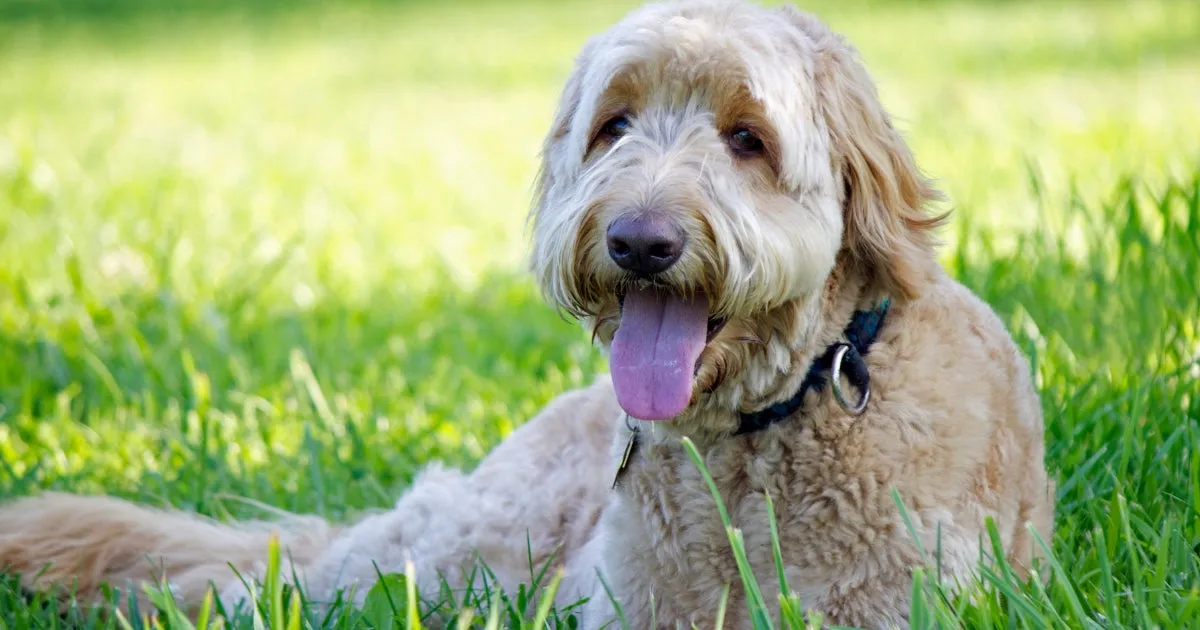 An apricot teddy bear looking Groodle laying in grass facing the camera with its tongue out.
An apricot teddy bear looking Groodle laying in grass facing the camera with its tongue out.
Afghan Hound
Despite their famously long and flowing coat, Afghan Hounds are surprisingly classified as a low-shedding breed. Their fine, silky hair requires significant grooming to prevent mats, but they don’t shed heavily. For owners who love the regal appearance of a large dog but are concerned about hair on their furniture and clothing, the Afghan Hound can be a beautiful and elegant choice.
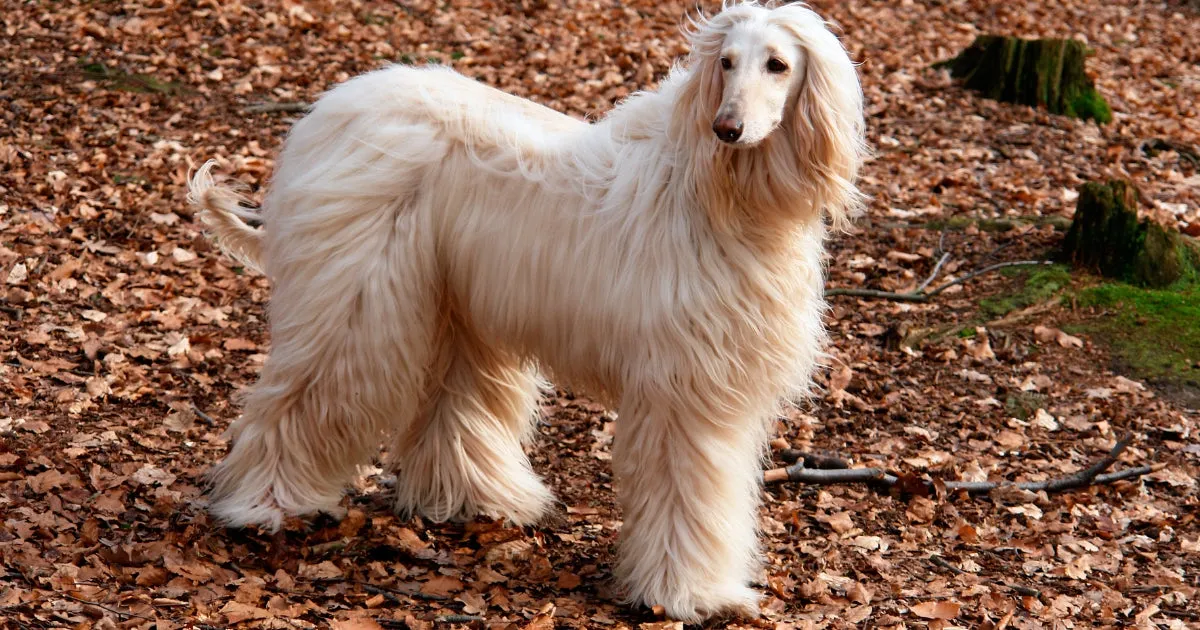 A beige Afghan Hound with long, flowing hair.
A beige Afghan Hound with long, flowing hair.
Irish Water Spaniel
The Irish Water Spaniel is an energetic and intelligent breed characterized by its distinctive, dense, curly, and water-resistant coat. This unique coat sheds minimally, making them a suitable choice for those seeking large dogs that don’t shed excessively. These dogs are known for their love of water and require regular grooming to keep their curly coats free from mats. Their playful and friendly nature makes them excellent companions for active families.
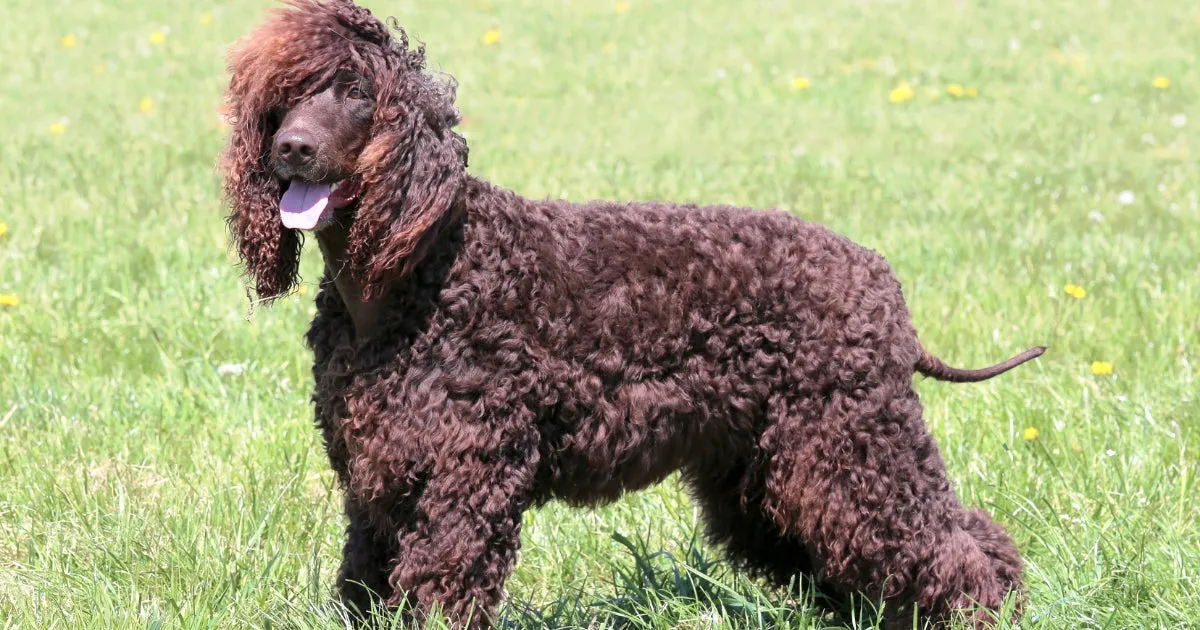 A brown Irish Water Spaniel with curly, dense fur.
A brown Irish Water Spaniel with curly, dense fur.
Lagotto Romagnolo
Originating from Italy, the Lagotto Romagnolo is an ancient water dog breed renowned for its dense, curly coat that is considered non-shedding. Originally bred for truffle hunting, these dogs are affectionate, loyal, and make excellent family pets. They possess a high level of intelligence and enjoy outdoor activities. Their curly coat requires regular grooming to maintain its health and prevent matting.
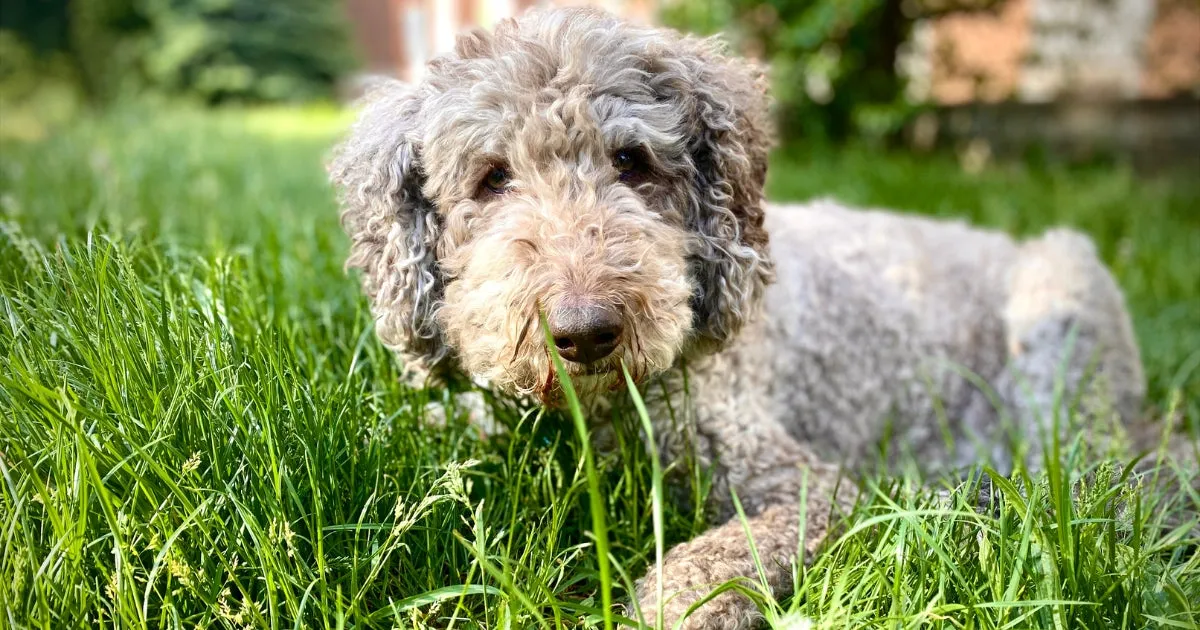 A grey and brown Lagotto Romagnolo with a dense curly coat laying on green grass.
A grey and brown Lagotto Romagnolo with a dense curly coat laying on green grass.
Portuguese Water Dog
Portuguese Water Dogs are known for their trainability, friendly demeanor, and love for active households that can provide ample exercise and mental stimulation. Their unique coat is both hypoallergenic and non-shedding, making them an ideal breed for allergy-sensitive owners. Similar to other non-shedding breeds, their hair grows continuously and requires consistent grooming to prevent matting. They are intelligent and enjoy activities like swimming.
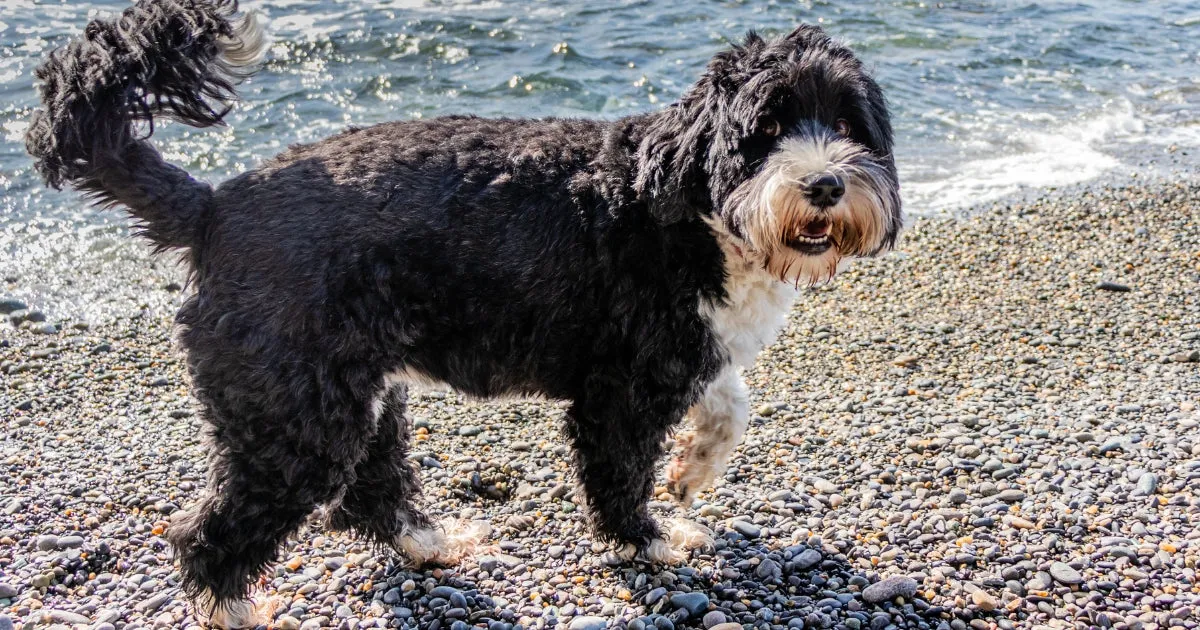 A black curly dog with a white chest and beard walking along the edge of the water.
A black curly dog with a white chest and beard walking along the edge of the water.
Komondor
The Komondor, often called the Hungarian Sheepdog, is a large, powerful breed instantly recognizable by its heavy, corded coat. This unique coat provides excellent protection against harsh weather and predators. While virtually non-shedding, the Komondor’s distinctive coat requires significant and specialized grooming to maintain its texture and prevent matting. They are naturally protective and loyal, making them devoted family companions when properly trained and socialized.
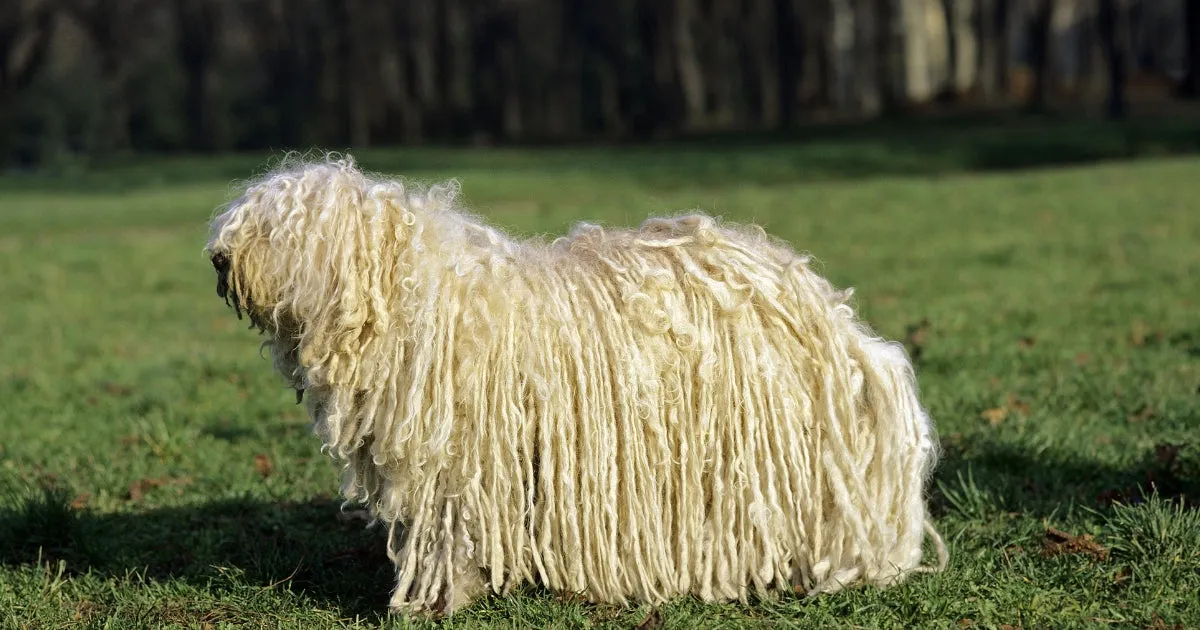 A Komondor dog with a distinctive white, corded coat.
A Komondor dog with a distinctive white, corded coat.
Peruvian Inca Orchid
The Peruvian Inca Orchid is a rare and elegant breed that is generally low-shedding. They typically have short, smooth coats that require minimal grooming. However, especially the hairless variety, their skin needs protection from the elements, such as sunburn and cold. This breed is affectionate and agile, thriving in active homes with attentive owners.
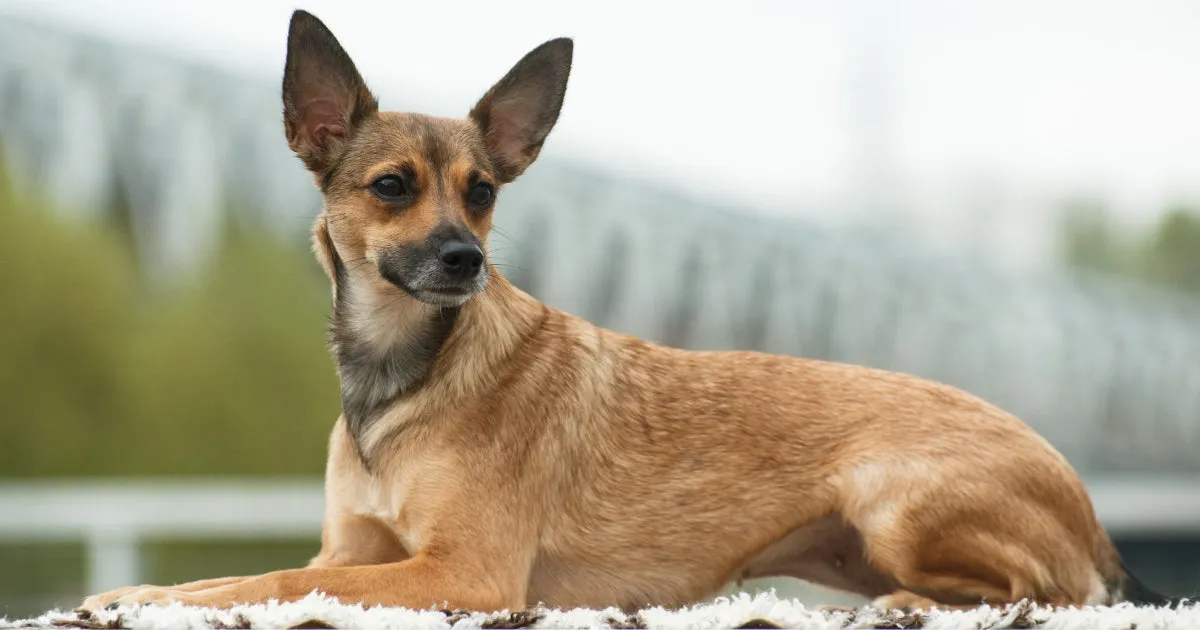 A short haired smooth brown coated dog with large pointy ears.
A short haired smooth brown coated dog with large pointy ears.
Wirehaired Pointing Griffon
These dogs have a thick, wiry coat that sheds less than many other double-coated breeds. Regular professional grooming is essential to prevent mats and keep their coat in good condition. While they might require daily brushing, their shedding is significantly less compared to many other breeds. Their energetic and eager-to-please nature makes them excellent hunting or family companions.
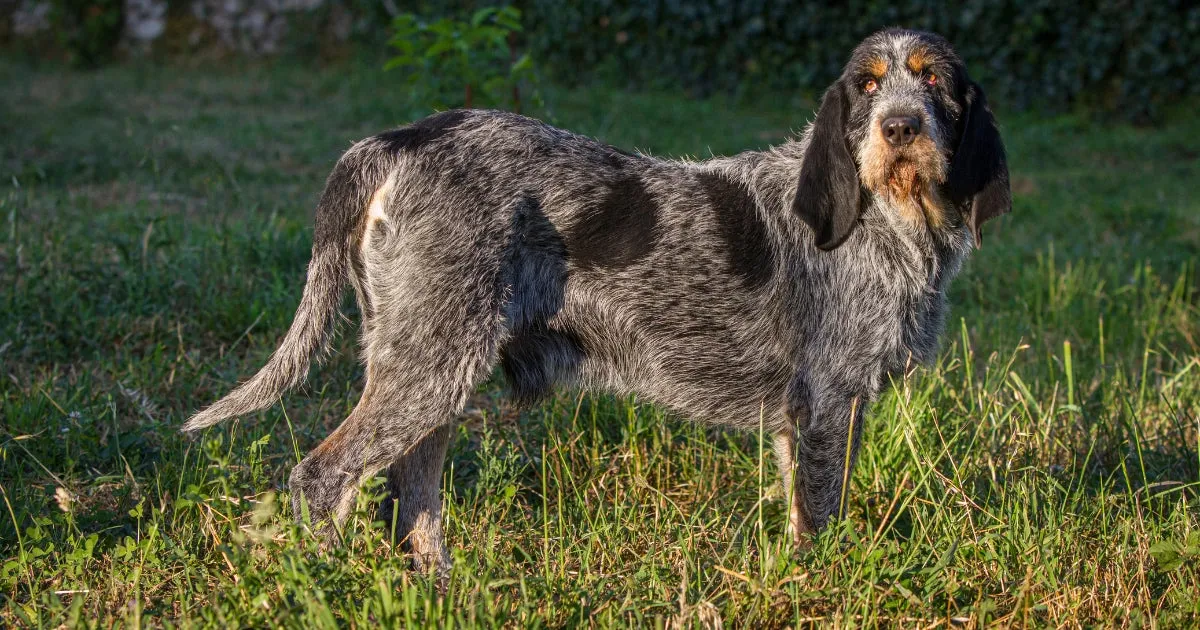 A grey dog with large black patches and big black floppy ears.
A grey dog with large black patches and big black floppy ears.
Exploring options such as dog breeds that stay small and don’t shed can also provide insights if size is a primary consideration.
Essential Grooming Tips for Large Dogs That Don’t Shed
Even breeds categorized as large dogs that don’t shed much require dedicated grooming to maintain their health and comfort. Regular brushing is paramount, not only to remove loose hair and dander but also to distribute natural oils throughout the coat, promoting a healthy shine and preventing skin issues. For breeds with continuously growing or curly hair, frequent brushing is crucial to prevent painful matting and tangles.
When selecting grooming products, opt for gentle shampoos and conditioners specifically formulated for dogs. Products like ‘Drool’ by Dr. Chris Brown offer effective cleansing without irritating sensitive skin. Complementary care products, such as the ‘Natural Dog Company’s Paw Soother’ and ‘Snout Soother’, can address dryness and cracking on paws and noses, ensuring your dog’s overall well-being.
After walks, a quick wipe-down with a damp cloth or specialized dog wipes can help remove any lingering allergens from your dog’s coat, further contributing to a cleaner home environment. Establishing a consistent grooming routine with the right tools and products tailored to your dog’s specific coat type will ensure they look, feel, and smell their best, strengthening your bond in the process. If you’re interested in other low-shedding options, consider small to medium sized dogs that don’t shed.
Frequently Asked Questions about Large Dogs That Don’t Shed
What is the least shedding large dog?
While no dog is entirely non-shedding, breeds like the Standard Poodle and Giant Schnauzer are renowned for their minimal shedding. Other excellent options include the Airedale Terrier, Groodle, and Afghan Hound. These breeds often have unique coat types that trap loose hair or grow continuously, reducing the amount of dander and fur that ends up around your home.
What is the largest breed of non-shedding dog?
The Standard Poodle is generally considered one of the largest breeds with a significantly low-shedding coat. While other large breeds like the Giant Schnauzer and Komondor also shed minimally, the Standard Poodle stands out for its impressive size and its “hypoallergenic” coat. Their weight typically ranges from 18 to 32 kilograms, and their dense, curly coat requires diligent grooming.
What is the calmest large dog?
Temperament can vary greatly among individual dogs, but some larger non-shedding breeds are known for their generally calm disposition. The Standard Poodle, Irish Water Spaniel, and Bergamasco Sheepdog (though not explicitly detailed above, are often noted for their calm nature) are often cited as having gentle temperaments and typically require less intense exercise than some other large breeds. These breeds can make excellent, laid-back companions for families seeking a lower-shedding dog.
Which dog sheds the least in Australia?
The same breeds that are popular worldwide for their low-shedding qualities are also excellent choices for Australian homes. This includes Poodles, Schnauzers, and their crossbreeds like Groodles. Other breeds known for minimal shedding and suitable for Australian conditions include the Kerry Blue Terrier, Lagotto Romagnolo, and Wirehaired Pointing Griffon. Regular grooming is key for managing allergies and keeping these breeds’ coats healthy. For those considering smaller companions, quiet small dog breeds that don’t shed can also be a great option.
Conclusion: Embracing a Low-Shedding Large Companion
Choosing a large dog breed that minimizes shedding can significantly enhance your living experience, especially for those with allergies or a preference for a cleaner home. While the concept of a truly “non-shedding” dog is a myth, the breeds discussed in this guide offer exceptional low-shedding qualities, making them fantastic candidates for family pets. Breeds like the Standard Poodle, Groodle, and Portuguese Water Dog provide the companionship and presence of a large dog without the overwhelming amount of shedding often associated with them. By understanding their unique coat types and committing to a consistent grooming routine, you can enjoy the unwavering loyalty and love of a large canine companion while maintaining a comfortable and tidy home. Finding the right breed is about balancing your lifestyle needs with the dog’s specific requirements, leading to a rewarding and lifelong bond.
